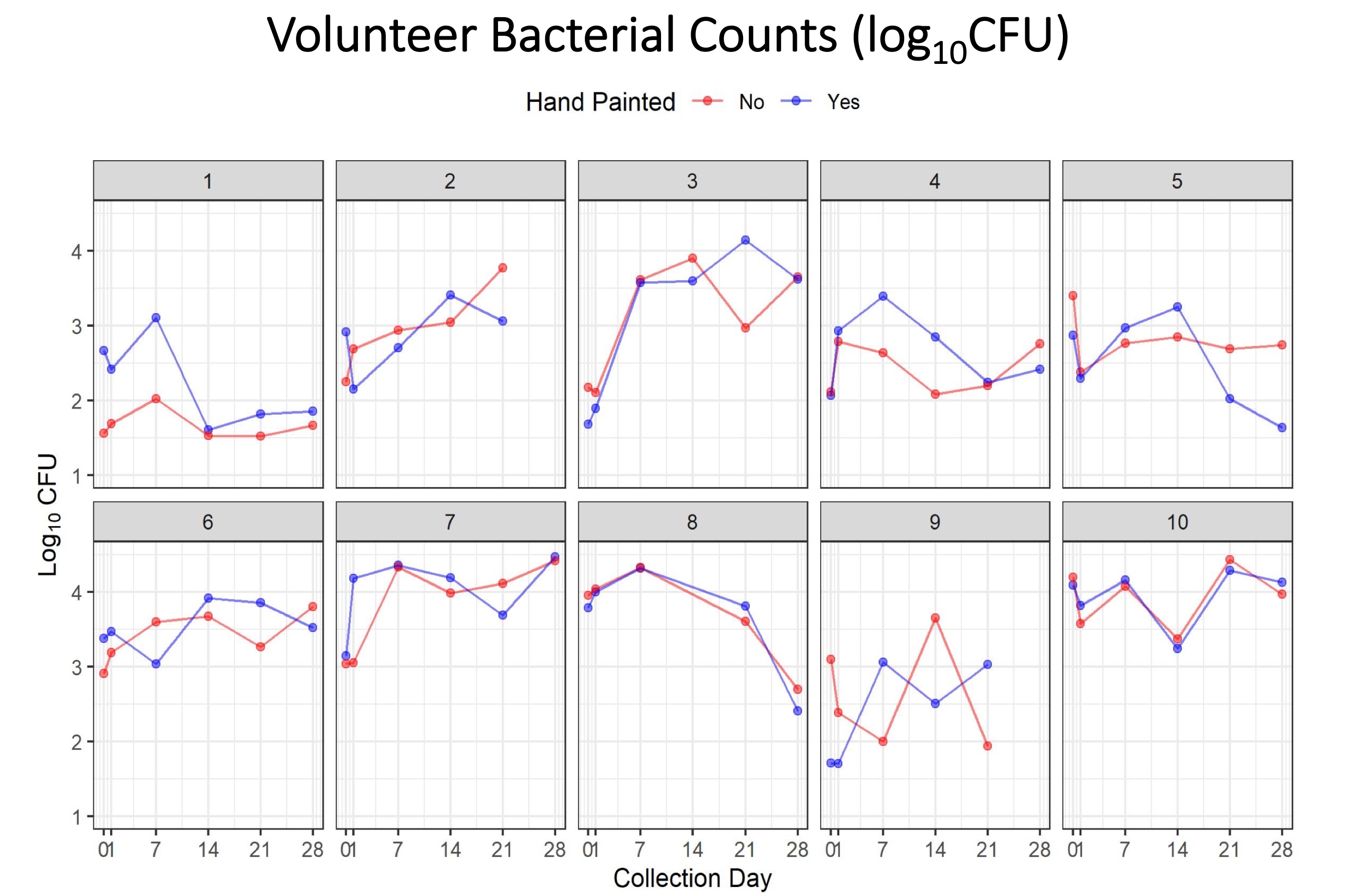Randomized Control Trial of the Effect of Nail Polish on Hand Bacterial Counts of Operating Room Staff: A Pilot Study
Ashley Jordan*1, Raymond Stemrich1, Wanyan Ma1, Amanda Styer2, Katie Frank2, Mark Shelly3, Joseph DeSantis1, Rebecca Hoffman2
1Plastic Surgery, Geisinger Medical Center, Selinsgrove, PA; 2General Surgery, Geisinger Medical Center, Danville, PA; 3Infectious Disease, Geisinger Medical Center, Danville, PA
Basic hand hygiene and aseptic technique are essential factors in the perioperative setting. Some professionals consider nail hygiene just as important. Unfortunately, many hospitals have strict policies against wearing nail polish in the hospital setting. These policies are based on a limited number of hand hygiene studies, many with poor study design, yielding scant data and inconclusive results. This pilot study seeks to assess the impact of gel nail polish on hand bacterial counts in the peri-operative setting and to evaluate whether the ability to wear nail polish influences employee job satisfaction.
A randomized control trial of anesthesia providers was performed over a 4-week period (September-October 2022). Participants served as their own internal control; one hand unaltered, while the other, gel polish was applied by a licensed professional. The intervention hand was randomized. Bacterial counts were collected at baseline and weekly via glove juice method and plated on Letheen agar. Bacterial count assessment was blinded and analyzed in log10CFUs. A satisfaction survey was administered at the study inception and conclusion.
Ten subjects completed the study; 8 female. 100% of participants were right hand dominant, 40% were randomized to their dominant hand. Highest bacterial count immediately after nail painting was 4.18(painted) and 4.04(control) log10CFUs. Highest counts at study conclusion were 4.47 and 4.42 log10CFUs, respectively. There were no statistically significant differences in bacterial counts between the intervention, painted hand and the control, unpainted hand (all Wilcoxon rank-sum p-values >0.16; Figure). Initially, 40% of participants reported the ability to wear nail polish would increase their job satisfaction; at study conclusion, this increased to 60%.
The lack of significant differences in bacterial counts in this pilot study provides some confidence that a larger randomized trial investigating the use of gel polish would be feasible and safe for patients. Allowing employees to wear nail polish may lead to increased job satisfaction.
Back to 2023 Abstracts


